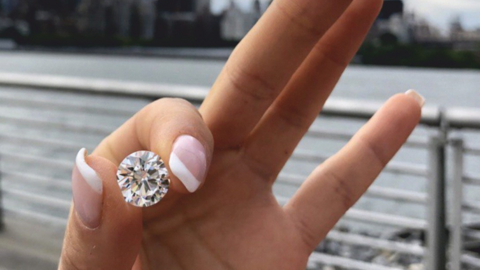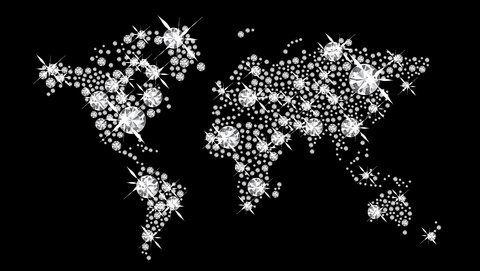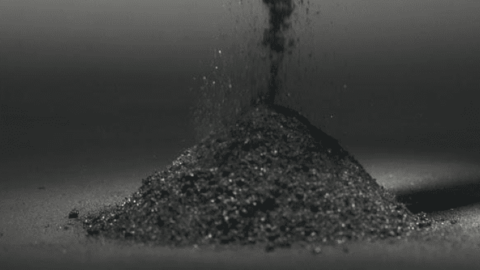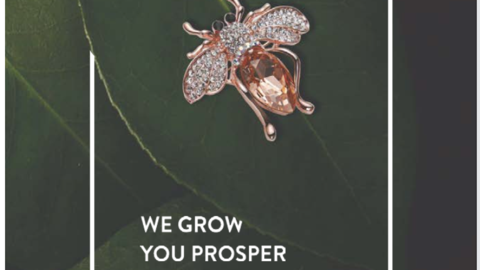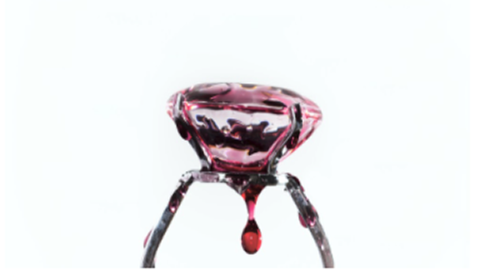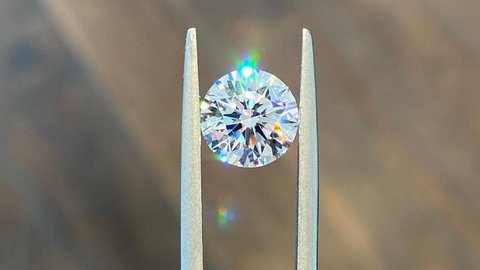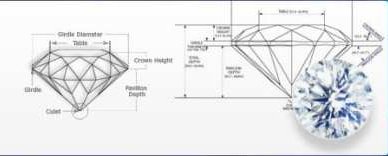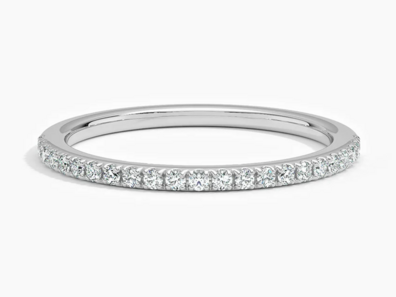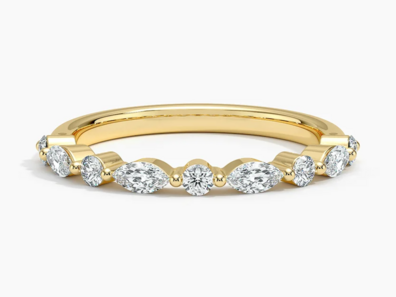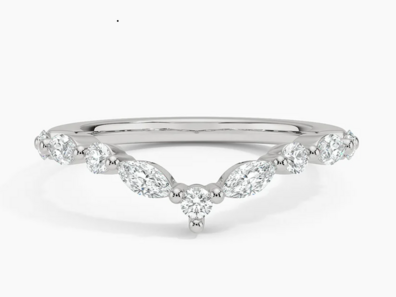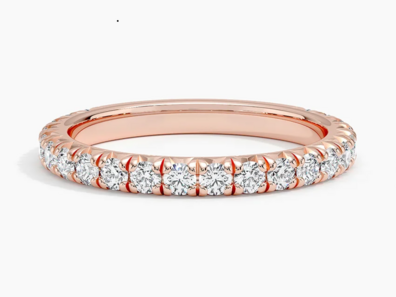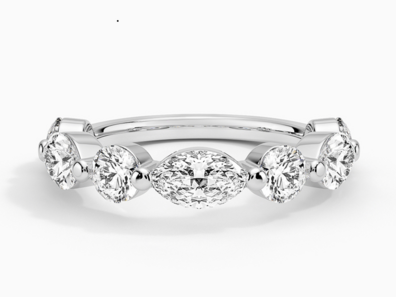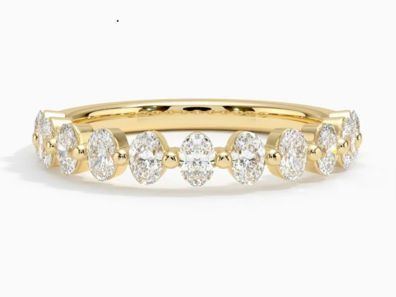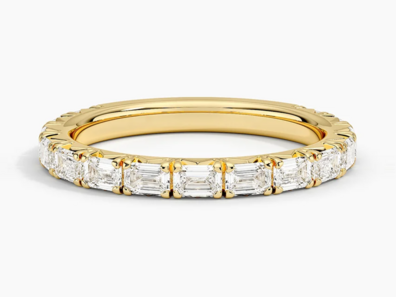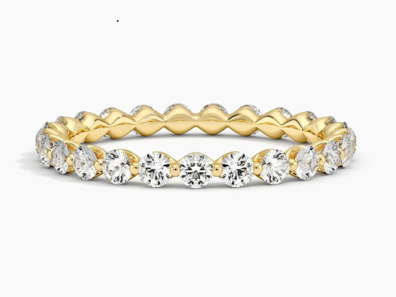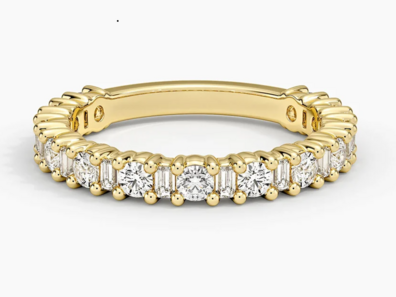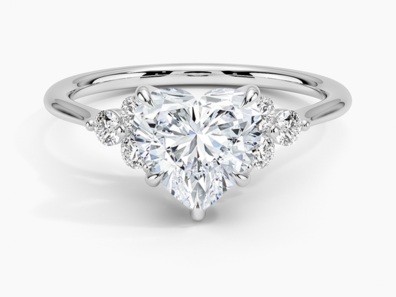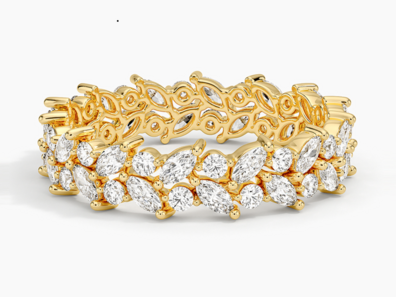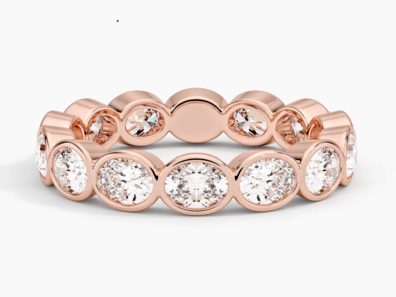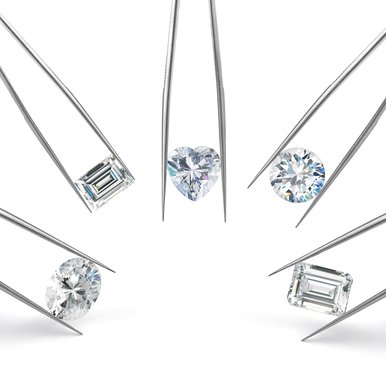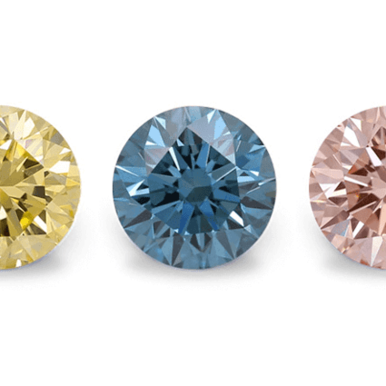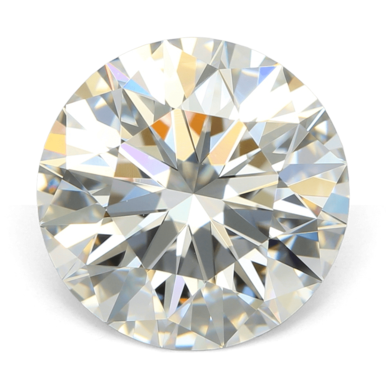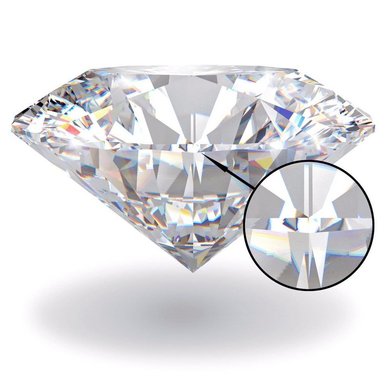Stackable Lab Grown Diamond Wedding Rings - Build Your Perfect Set
Author: Alex K., CMO at Labrilliante Updated: 2025-12-09 Reading Time: 8 minutes
TL;DR: Build multi-ring collections matching royal aesthetics at 83-90% cost reduction versus traditional retailers. Progressive milestone additions transform wedding jewelry into personalized chronicles while distributing $10,000-$15,000 investments across two decades. Order by January 20th for Valentine's delivery and spring wedding readiness.
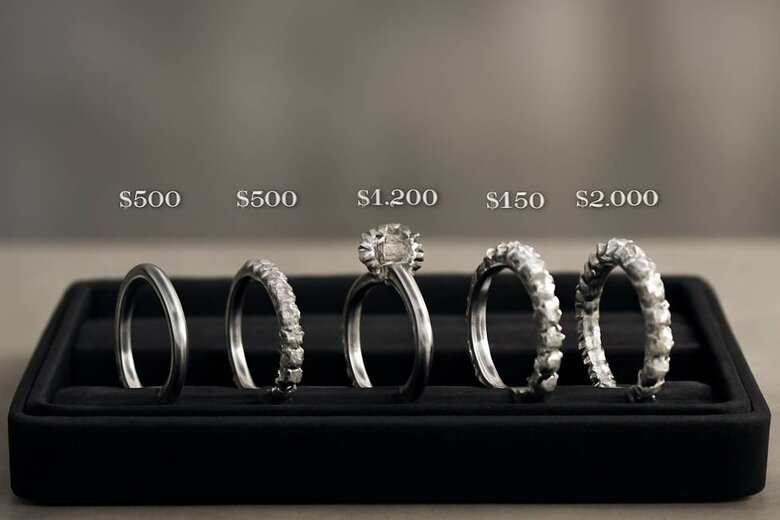
Wedding jewelry has evolved from single statement pieces into dynamic collections that grow with relationships. Stackable lab grown diamond wedding rings answer the modern demand for personalized storytelling through wearable art—each band represents milestones, memories, and meaningful chapters rather than one-time purchases. This guide reveals how royal-inspired stacking strategies combine with lab grown economics to create heirloom collections without traditional luxury markups. You'll discover design coordination principles, anniversary timing strategies, and budget allocation models that transform wedding sets into evolving symbols of commitment. Whether you're drawn to Kate Middleton's five-ring configuration or building your own milestone timeline, strategic stacking delivers maximum visual impact through intelligent investment planning.
When Single Statement Pieces Win: The Case Against Stacking
Traditional jewelers argue that stackable collections dilute emotional significance by spreading symbolic value across multiple pieces rather than concentrating meaning in one extraordinary ring. This perspective holds merit in specific scenarios—particularly when cultural traditions favor singular heirloom pieces passed through generations, or when wearers prefer minimalist aesthetics that view multiple bands as excessive ornamentation. A single $15,000 custom ring with superior carat weight and unique design elements certainly commands attention that modest stackable bands cannot individually match.
The cohesion challenge intensifies over extended timelines. Style evolution across twenty years risks creating disjointed collections when early purchases don't align with later preferences. A 2mm pavé band selected at age 25 may clash aesthetically with choices made at 45, requiring expensive redesigns or abandonment of earlier pieces. Additionally, daily wear logistics complicate multi-ring management—each additional band increases loss risk, maintenance requirements, and physical discomfort during activities requiring ring removal.
However, these objections overlook stackable collections' fundamental advantages for the mixed audience prioritizing flexibility and value. Strategic design parameters established upfront prevent cohesion issues by maintaining consistent metal types, diamond specifications, and complementary band widths. The distributed investment model proves superior for couples building equity simultaneously in homes, businesses, and retirement accounts rather than concentrating luxury spending in year one. Most critically, stackable sets offer what single rings cannot: visual transformation reflecting relationship evolution while preserving modification freedom unavailable in monolithic designs.
Kate Middleton's 5-Ring Secret: How Royals Stack Their Love Stories
Kate Middleton wears five distinct stackable bands creating her signature royal look. Each ring tells a different story. Her sapphire engagement ring pairs with multiple diamond eternity bands in varying widths and pavé configurations.
The Princess of Wales combines her iconic sapphire engagement ring with several diamond eternity bands. Each represents different chapters of her royal journey. Her main wedding band features classic gold design, while anniversary bands showcase varying pavé diamond settings that catch light from different angles.
| Configuration Element | Kate's Royal Stack (Mined Diamonds) | Modern Lab-Grown Alternative | Savings |
|---|---|---|---|
| Total Rings in Stack | 5 bands (1 engagement + 4 stacking bands) | 5 bands (1 engagement + 4 stacking bands) | - |
| Primary Wedding Band | Classic gold, 2.5mm width, no diamonds$800-$1,200 | Classic gold, 2.5mm width, no diamonds$800-$1,200 | $0 |
| Eternity Band #1 | 2.5mm width, full pavé setting0.35ct total (35 × 0.01ct F-G/VS diamonds)$3,500-$5,000 | 2.5mm width, full pavé setting0.35ct total (35 × 0.01ct F-G/VS lab diamonds)$450-$650 | $3,050-$4,350 (87%) |
| Eternity Band #2 | 2mm width, micro-prong pavé0.28ct total (28 × 0.01ct F-G/VS diamonds)$2,800-$4,000 | 2mm width, micro-prong pavé0.28ct total (28 × 0.01ct F-G/VS lab diamonds)$350-$500 | $2,450-$3,500 (88%) |
| Accent Band #1 | 1.5mm width, delicate pavé0.20ct total (20 × 0.01ct F-G/VS diamonds)$2,000-$2,800 | 1.5mm width, delicate pavé0.20ct total (20 × 0.01ct F-G/VS lab diamonds)$250-$350 | $1,750-$2,450 (88%) |
| Accent Band #2 | 1.8mm width, alternating pavé pattern0.24ct total (24 × 0.01ct F-G/VS diamonds)$2,400-$3,200 | 1.8mm width, alternating pavé pattern0.24ct total (24 × 0.01ct F-G/VS lab diamonds)$300-$400 | $2,100-$2,800 (88%) |
| Sapphire Engagement Ring | 12ct sapphire + 0.80ct diamond halo$8,000-$12,000 (estimate) | 12ct sapphire + 0.80ct lab diamond halo$6,500-$8,500 | $1,500-$3,500 (19-29%) |
| Total Diamond Weight | 1.87 carats across all bands | 1.87 carats across all bands | - |
| Diamond Quality Standard | F-G color, VS clarity, excellent cutMicro-prong and pavé settings | F-G color, VS clarity, excellent cutMicro-prong and pavé settings | Identical specifications |
| Visual Impact | Cohesive brilliance, layered depth2-3mm primary bands, 1.5-2mm accents | Cohesive brilliance, layered depth2-3mm primary bands, 1.5-2mm accents | Visually indistinguishable |
| Complete 5-Ring Stack Cost | $19,500-$28,200 | $2,950-$4,100 | $16,550-$24,100 (83-85%) |
| Cost Per Band Average | $3,900-$5,640 | $590-$820 | $3,310-$4,820 per band |

Royal stacking traditions favor meaningful additions over single statement pieces. The technical execution requires precise coordination - Kate's primary bands measure 2-3mm width, while accent bands range from 1.5-2mm. This creates visual hierarchy without competing elements.
Here's what makes royal stacks work: consistent diamond quality across all bands. The pavé diamonds typically measure 0.01-0.02 carats each, set in micro-prong settings that minimize metal visibility while maximizing brilliance. F-G color grades ensure seamless integration when worn together.
Modern interpretations of the Kate Middleton stack cost $15,000-$25,000 through traditional retailers using mined diamonds. Lab grown alternatives achieve identical visual impact at $2,500-$4,000 - representing 83-90% savings. Same five-ring configuration. Massive price difference.
The commitment requirement means building cohesive collections demands planning across multiple purchases rather than immediate gratification. Royal-inspired subtlety may also appear understated compared to contemporary maximalist jewelry trends.
Every Anniversary Deserves a Diamond: Building Your Milestone Collection Over Time
Anniversary stacking creates personalized jewelry collections by adding one meaningful ring per milestone. This transforms wedding sets into visual chronicles of shared experiences. Each addition spreads luxury purchases across time while building heirloom quality pieces.
Traditional milestone marking follows major life events: first anniversary, home purchase, children's births, or decade markers. Each addition maintains consistent metal type and diamond quality while varying design elements like band width or setting style.
Smart collectors establish design parameters before beginning. Successful stacks use consistent metal - either 14k or 18k gold in matching color temperature. Diamond specifications stay within one color grade and clarity level. Band widths follow mathematical progression: if the wedding band measures 2mm, additions work best at 1.5mm, 2.5mm, or 3mm.
| Anniversary Year | Milestone Event | Ring Addition Description | Lab-Grown Diamond Details | Ring Cost | Cumulative Investment | Estimated Collection Value |
|---|---|---|---|---|---|---|
| Year 1 | First Anniversary | Delicate pavé eternity band, 1.5mm width | 0.25 ctw, G VS2, round brilliant | $450 | $450 | $475 |
| Year 3 | Career Promotion | Bezel-set accent band, 2mm width | 0.30 ctw, G VS2, round brilliant | $525 | $975 | $1,050 |
| Year 5 | Fifth Anniversary | Half eternity band with larger stones, 2.5mm width | 0.50 ctw, G VS1, round brilliant | $875 | $1,850 | $2,100 |
| Year 7 | First Child Born | Twisted pavé band with milgrain detail, 2mm width | 0.35 ctw, G VS2, round brilliant | $650 | $2,500 | $2,875 |
| Year 10 | Tenth Anniversary | Full eternity band with premium stones, 3mm width | 1.00 ctw, F VS1, round brilliant | $1,850 | $4,350 | $5,200 |
| Year 12 | Home Purchase | Channel-set princess cut band, 2.5mm width | 0.60 ctw, G VS2, princess cut | $950 | $5,300 | $6,450 |
| Year 15 | Fifteenth Anniversary | Three-row micropavé band, 3.5mm width | 0.75 ctw, F VS1, round brilliant | $1,350 | $6,650 | $8,200 |
| Year 17 | Second Child Graduation | Geometric Art Deco inspired band, 2mm width | 0.40 ctw, G VS1, baguette & round | $825 | $7,475 | $9,300 |
| Year 20 | Twentieth Anniversary | Signature statement eternity band, 4mm width | 1.50 ctw, E VS1, round brilliant | $2,750 | $10,225 | $13,500 |
What about timing strategy? First-year additions often feature simple eternity bands with 0.01-0.02 carat pavé diamonds, establishing foundation aesthetics. Fifth anniversary pieces introduce larger accent stones. Tenth anniversaries warrant substantial additions like full eternity bands with 0.05-0.10 carat stones.
The investment math reveals compelling advantages over single large purchases. A $500 annual ring addition over twenty years creates a $10,000-$15,000 collection when accounting for quality improvements and design evolution. This distributed approach reduces financial pressure while allowing style refinement.
"In the realm of anniversary stacking, a critical yet often overlooked factor is the technological advancements in diamond creation processes. By leveraging the latest in lab-grown diamond technology, collectors can access higher quality stones at each milestone without inflating the overall cost. This plays a pivotal role in enhancing the cumulative value of the collection while maintaining stringent quality consistency. Understanding these technological nuances can significantly influence both the aesthetic and financial outcomes of milestone collections."
However, milestone collecting requires discipline and long-term vision that conflicts with immediate gratification. Style evolution over decades can create cohesion challenges if early choices don't align with later preferences.
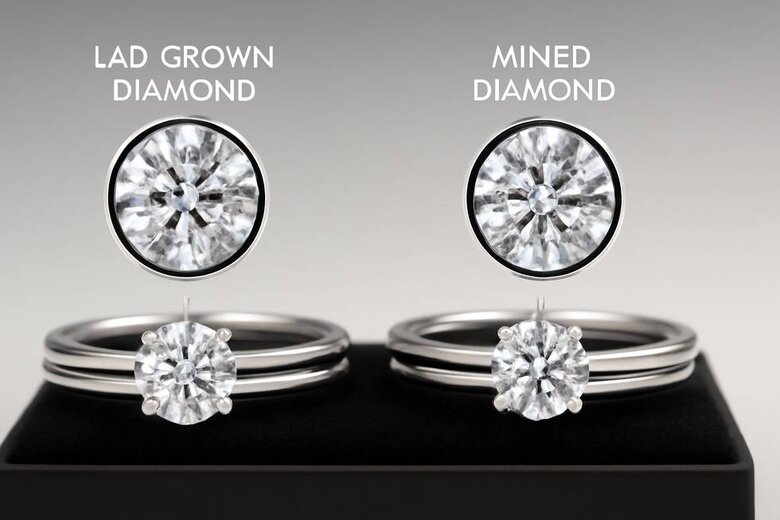
The $15,000 Stack for $2,000: Lab Grown Luxury Without the Luxury Markup
Lab grown diamond stackable sets deliver identical visual impact to mined collections while eliminating 400-500% retail markup. A five-ring set costs approximately $2,000-$3,500 versus $12,000-$18,000 for equivalent mined configurations. Same brilliance. Different economics.
These savings stem from supply chain compression rather than quality reduction. Traditional retailers purchase from miners, wholesalers, then distributors before final markup - each step adding 40-60% cost increase. Lab grown diamonds bypass mining infrastructure entirely, moving directly from controlled growth environments to certification.
Quality specifications show no measurable differences in consumer-relevant characteristics. Both achieve identical hardness ratings (10 Mohs scale), refractive indices (2.42), and dispersion rates (0.044). Professional gemological testing requires advanced spectroscopy to distinguish lab grown from mined alternatives.
The luxury experience remains unchanged despite cost reduction. Lab grown stackable sets receive identical IGI or GIA certification, professional setting in 14k or 18k gold, and warranty coverage. The pavé diamonds maintain consistent 0.01-0.03 carat sizing with F-G color grades and VS1-VS2 clarity ratings.
Budget allocation shifts dramatically when stackable sets cost $2,000 instead of $15,000. The $13,000 savings funds entire honeymoon experiences, home down payments, or investment portfolios that appreciate rather than depreciate.
Consumer psychology research indicates that savings magnitude influences wearing behavior positively. Owners of affordable stackable sets wear them more frequently for daily activities rather than reserving them for special occasions.
Trade-offs include reduced exclusivity and current resale value differences, though this gap narrows as consumer acceptance increases.
Your Valentine's 2025 Stack Starts Today: Spring Wedding Timeline and Delivery Dates
Valentine's Day 2025 falls on Friday, February 14th, requiring orders by January 20th for custom stackable sets. Perfect timing. Spring wedding season peaks March through June, making Valentine's purchases ideal for complete collections before ceremony dates.
Custom stackable production follows predictable timelines smart couples leverage. Standard three-ring sets require 2-3 weeks for diamond selection, setting, and quality control when working directly with manufacturers. Complex five-ring collections with mixed metals extend timelines to 3-4 weeks.
| Wedding Date | Order Deadline (Standard Production) | Order Deadline (Complex 5-Ring Sets) | Recommended Buffer Period | Final Fitting Date | Valentine's Delivery Target | Production Timeline | Rush Fee Risk |
|---|---|---|---|---|---|---|---|
| March 1-15, 2025 | January 10-15, 2025 | January 5-10, 2025 | 6-7 weeks | February 15, 2025 | February 10-12, 2025 | 2-3 weeks (3-ring standard) | High (20% fee if ordered after Jan 20) |
| March 16-31, 2025 | January 15-20, 2025 | January 10-15, 2025 | 5-6 weeks | February 20, 2025 | February 10-12, 2025 | 2-3 weeks (3-ring standard) | Moderate (15% fee if ordered after Jan 25) |
| April 1-15, 2025 | January 20-25, 2025 | January 15-20, 2025 | 8-9 weeks | March 1, 2025 | February 10-12, 2025 | 3-4 weeks (5-ring complex) | Low (standard pricing) |
| April 16-30, 2025 | January 25-31, 2025 | January 20-25, 2025 | 9-10 weeks | March 10, 2025 | February 10-12, 2025 | 3-4 weeks (5-ring complex) | Low (standard pricing) |
| May 1-15, 2025 | February 1-7, 2025 | January 25-31, 2025 | 11-12 weeks | March 20, 2025 | February 10-12, 2025 | 2-3 weeks (3-ring standard) | Low (standard pricing) |
| May 16-31, 2025 | February 7-14, 2025 | February 1-7, 2025 | 12-14 weeks | April 1, 2025 | February 10-12, 2025 | 3-4 weeks (5-ring complex) | Very Low (standard pricing) |
| June 1-15, 2025 | February 14-21, 2025 | February 7-14, 2025 | 14-15 weeks | April 15, 2025 | February 10-12, 2025 | 2-3 weeks (3-ring standard) | Very Low (standard pricing) |
| June 16-30, 2025 | February 21-28, 2025 | February 14-21, 2025 | 15-16 weeks | May 1, 2025 | February 10-12, 2025 | 3-4 weeks (5-ring complex) | Very Low (standard pricing) |

Spring 2025 wedding dates create specific deadline pressures. March weddings require final fittings by February 15th, making January orders essential. April and May ceremonies allow Valentine's ordering with comfortable buffer time. June weddings provide maximum flexibility.
What about seasonal demand? Industry data shows 40-50% increased order volume between January 15th and March 15th, creating manufacturer bottlenecks. Early ordering secures priority scheduling and standard pricing, while last-minute requests often incur 15-20% rush fees.
Valentine's stackable gifting creates unique emotional impact through "reveal progression" - each ring represents different relationship aspects: past memories, present commitment, future dreams. This storytelling approach enhances the gift experience beyond simple jewelry presentation.
Spring wedding coordination benefits from Valentine's purchases through extended familiarization time. Brides receive 2-3 months to wear and adjust to complete ring sets before wedding day photography. This identifies comfort issues, sizing needs, or style preferences requiring modification.
Budget strategy distributes payments across multiple months rather than single large expenses during peak wedding planning periods. Recommended delivery dates target February 10th-12th for Valentine's, providing cushion for shipping delays while maintaining surprise elements.
Build Collections That Grow With Your Love Story
Stackable lab grown diamond wedding rings deliver royal aesthetics at accessible price points while creating personalized milestone chronicles impossible with single-ring purchases. The $13,000 savings versus traditional retailers funds complete honeymoon experiences or investment portfolios that appreciate alongside your collection. Custom three-to-five ring sets provide immediate visual impact for spring 2025 weddings when ordered before Valentine's rush periods.
Design Your Perfect Stack Today
Labrilliante's direct-to-consumer model eliminates markup layers while maintaining IGI certification and professional 14k-18k gold settings. Book your consultation now to establish design parameters, coordinate anniversary timelines, and secure February delivery. Your stackable collection starts with one meaningful ring—but the story you build spans decades.
Frequently Asked Questions
A five-ring stackable set with lab grown diamonds typically costs $2,000-$3,500, while an equivalent mined diamond collection ranges from $12,000-$18,000. This represents an 83-90% cost reduction while maintaining identical visual appearance, quality specifications, and professional certification.
Maintain consistent metal type (either 14k or 18k gold in matching color), keep diamond specifications within one color grade and clarity level, and follow mathematical progression for band widths (such as 1.5mm, 2mm, 2.5mm, or 3mm). Pavé diamonds should measure between 0.01-0.03 carats with F-G color grades and VS1-VS2 clarity ratings across all bands.
Single statement rings concentrate symbolic value in one extraordinary piece, which aligns better with cultural traditions favoring singular heirloom pieces and minimalist aesthetics. A single $15,000 custom ring with superior carat weight commands individual attention that modest stackable bands cannot match, and eliminates concerns about style evolution creating disjointed collections over decades.
No, lab grown and mined diamonds are visually and structurally indistinguishable to consumers and require advanced spectroscopy for professionals to differentiate. Both achieve identical hardness ratings (10 on the Mohs scale), refractive indices (2.42), and dispersion rates (0.044), with the same IGI or GIA certification standards.
Kate Middleton's five-ring stack combines her iconic sapphire engagement ring with a classic gold wedding band and multiple diamond eternity bands in varying widths (primary bands at 2-3mm, accent bands at 1.5-2mm) and pavé configurations. Each band represents different chapters of her royal journey, with pavé diamonds typically measuring 0.01-0.02 carats each in micro-prong settings.
First-year additions work best as simple eternity bands with 0.01-0.02 carat pavé diamonds to establish foundation aesthetics, fifth anniversaries can introduce larger accent stones, and tenth anniversaries warrant substantial additions like full eternity bands with 0.05-0.10 carat stones. A $500 annual addition over twenty years creates a $10,000-$15,000 collection while reducing financial pressure.
Orders must be placed by January 20th to guarantee Valentine's Day delivery on February 14th, 2025. Standard three-ring sets require 2-3 weeks for production, while complex five-ring collections need 3-4 weeks. March weddings require ordering by mid-January, while April-June ceremonies allow Valentine's ordering with comfortable buffer time.
The $13,000 average savings can fund entire honeymoon experiences, contribute to home down payments, or build investment portfolios that appreciate rather than depreciate. This budget reallocation also influences wearing behavior positively, as owners of affordable stackable sets wear them more frequently for daily activities rather than reserving them exclusively for special occasions.


